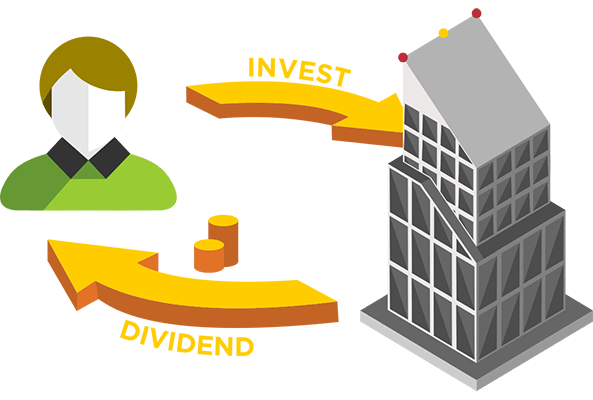Great article on CAPM..How Did The Restaurant Group plc’s (LON:RTN) 16.31% ROE Fare Against The Industry?
How Did The Restaurant Group plc’s (LON:RTN) 16.31% ROE Fare Against The Industry?
With an ROE of 16.31%, The Restaurant Group plc (LSE:RTN) outpaced its own industry which delivered a less exciting 10.39% over the past year. However, whether this above-industry ROE is actually impressive depends on if it can be maintained. A measure of sustainable returns is RTN’s financial leverage. If RTN borrows debt to invest in its business, its profits will be higher. But ROE does not capture any debt, so we only see high profits and low equity, which is great on the surface. But today let’s take a deeper dive below this surface. Check out our latest analysis for Restaurant Group
ROE = (annual net profit ÷ sales) × (sales ÷ assets) × (assets ÷ shareholders’ equity)
ROE = annual net profit ÷ shareholders’ equity
 LSE:RTN Last Perf Mar 27th 18Essentially, profit margin shows how much money the company makes after paying for all its expenses. Asset turnover reveals how much revenue can be generated from Restaurant Group’s asset base. Finally, financial leverage will be our main focus today. It shows how much of assets are funded by equity and can show how sustainable the company’s capital structure is. We can assess whether Restaurant Group is fuelling ROE by excessively raising debt. Ideally, Restaurant Group should have a balanced capital structure, which we can check by looking at the historic debt-to-equity ratio of the company. Currently the ratio stands at 16.81%, which is very low. This means Restaurant Group has not taken on leverage, and its above-average ROE is driven by its ability to grow its profit without a huge debt burden.
LSE:RTN Last Perf Mar 27th 18Essentially, profit margin shows how much money the company makes after paying for all its expenses. Asset turnover reveals how much revenue can be generated from Restaurant Group’s asset base. Finally, financial leverage will be our main focus today. It shows how much of assets are funded by equity and can show how sustainable the company’s capital structure is. We can assess whether Restaurant Group is fuelling ROE by excessively raising debt. Ideally, Restaurant Group should have a balanced capital structure, which we can check by looking at the historic debt-to-equity ratio of the company. Currently the ratio stands at 16.81%, which is very low. This means Restaurant Group has not taken on leverage, and its above-average ROE is driven by its ability to grow its profit without a huge debt burden.
 LSE:RTN Historical Debt Mar 27th 18
LSE:RTN Historical Debt Mar 27th 18
For Restaurant Group, I’ve put together three important factors you should further research:

What you must know about ROE
Return on Equity (ROE) weighs Restaurant Group’s profit against the level of its shareholders’ equity. An ROE of 16.31% implies £0.16 returned on every £1 invested, so the higher the return, the better. Investors that are diversifying their portfolio based on industry may want to maximise their return in the Restaurants sector by choosing the highest returning stock. However, this can be deceiving as each company has varying costs of equity and debt levels, which could exaggeratedly push up ROE at the same time as accumulating high interest expense.
Return on Equity = Net Profit ÷ Shareholders Equity
ROE is assessed against cost of equity, which is measured using the Capital Asset Pricing Model (CAPM) – but let’s not dive into the details of that today. For now, let’s just look at the cost of equity number for Restaurant Group, which is 8.30%. Given a positive discrepancy of 8.01% between return and cost, this indicates that Restaurant Group pays less for its capital than what it generates in return, which is a sign of capital efficiency. ROE can be dissected into three distinct ratios: net profit margin, asset turnover, and financial leverage. This is called the Dupont Formula:Dupont Formula
ROE = profit margin × asset turnover × financial leverageROE = (annual net profit ÷ sales) × (sales ÷ assets) × (assets ÷ shareholders’ equity)
ROE = annual net profit ÷ shareholders’ equity
Next Steps:
ROE is one of many ratios which meaningfully dissects financial statements, which illustrates the quality of a company. Restaurant Group’s ROE is impressive relative to the industry average and also covers its cost of equity. ROE is not likely to be inflated by excessive debt funding, giving shareholders more conviction in the sustainability of high returns. ROE is a helpful signal, but it is definitely not sufficient on its own to make an investment decision.For Restaurant Group, I’ve put together three important factors you should further research:
- 1. Financial Health: Does it have a healthy balance sheet? Take a look at our free balance sheet analysis with six simple checks on key factors like leverage and risk.
- 2. Valuation: What is Restaurant Group worth today? Is the stock undervalued, even when its growth outlook is factored into its intrinsic value? The intrinsic value infographic in our free research reporthelps visualize whether Restaurant Group is currently mispriced by the market.
- 3. Other High-Growth Alternatives : Are there other high-growth stocks you could be holding instead of Restaurant Group? Explore our interactive list of stocks with large growth potential to get an idea of what else is out there you may be missing!

Comments
Post a Comment